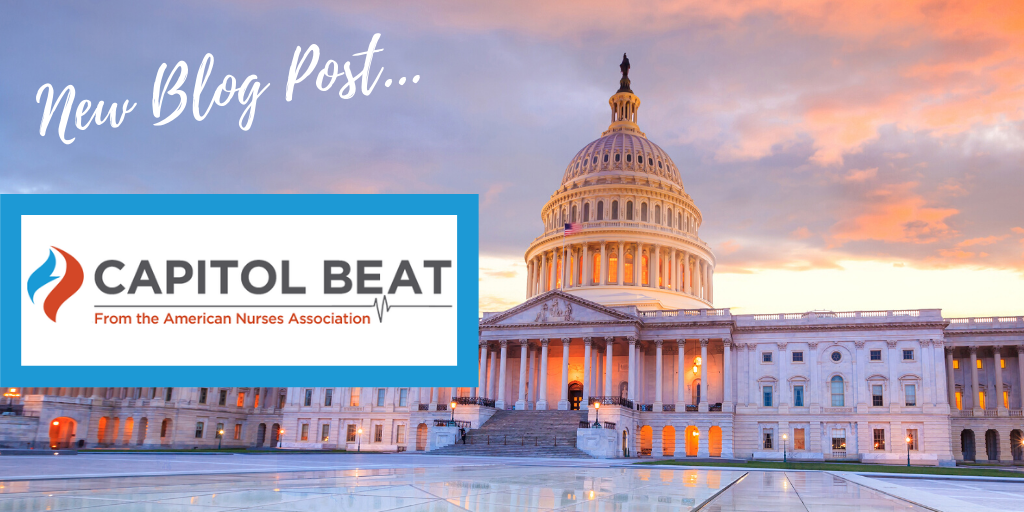
Eric T. Riebsomer, DNP, RN – Guest Author
New Mexico Nurses Association
According to the World Health Organization (WHO), climate change is the biggest health threat facing humanity (WHO, 2023). As we have witnessed recently, extreme weather events directly impact both social and environmental determinants of health (e.g., clean air, water, our food, and where we live). The WHO estimates that between 2030 and 2050, these changes will result in approximately 250,000 additional deaths per year. According to the Centers for Disease Control (CDC), health impacts in the southwest will be related to higher temperatures (increased death associated with heat), poor air quality (from wildfires and dust storms), vector-borne diseases, and water-related illness (CDC, 2023). A recent example of this occurred during the 2022 New Mexico wildfire season, where approximately one million acres were burned due to wildfires. These wildfires impacted the respiratory and cardiovascular health of families while they were burning, impacted water quality after the fire because of massive flood and debris flow events, and displaced thousands of people from their homes in fragile communities in New Mexico.
New Mexico Nurses for Climate and Health is a recently formed special interest group within the New Mexico Nurses Association (NMNA). The aim of this group is to bring together passionate, New Mexico nurse leaders to advocate for building resilience against changes in our climate that directly impact our health. In the 2021 New Mexico Climate Strategy report published by the climate change task force, building adaptation and resilience in public health was one of the highlighted sections where New Mexico was focusing time and resources. The New Mexico Department of Health (NMDOH) was using the CDC’s Building Resilience Against Climate Effects (BRACE) Framework to help New Mexico communities prepare for the impacts of climate change. The other areas focused on building resilience were, natural and working lands, emergency management and infrastructure, and water and natural resources.
During the 2022 legislative session, New Mexico lawmakers brought forth legislation to create a public health and climate resiliency program within the Department of Health (DOH). The purpose of the legislation was to create a fund, which would be disbursed to local and tribal government entities for the purpose of adapting to climate change through grants. The purpose of the grants would be to help the recipients to prepare for or respond to health threats related to extreme weather and other climate change effects. The legislation passed both the House and Senate committees, though it was not signed. As New Mexico continues to address climate and health issues, the New Mexico Nurses Association needs to be a part of these initiatives, offering a nurse’s perspective on how climate impacts the health of our patients, when it comes to combining primary prevention strategies with building resiliency in our communities.
While NMNA has created a special interest group to bring nurses together for this purpose, the role of nurses can be expanded outside of this, in all states. As health care experts, a nurse’s voice during legislative sessions can be very powerful. Nurses should get to know their legislators, talk to them about the effects climate change has on their patients. Community and public health nurses in particular play a vital role in communicating this. Another way nurses can get involved is by being on planning committees where they work, in their communities, or at their child’s school. This allows them to have a voice in preventing or modifying activities that may cause harm to the environment, which may ultimately harm people. Also, getting involved with the disaster preparedness team at their facility, this will offer nurses an opportunity to assist in developing primary prevention strategies to reduce the impact of environmental disasters, thereby building a more resilient community. In the end, anywhere a nurse can be involved in communicating how the health of their patients is impacted by environmental and climate changes, the better we are, and the more resilient our communities will become.
References:
Centers for Disease Control (CDC); https://www.cdc.gov/climateandhealth/effects/Southwest.htm (Accessed, April 2023)
New Mexico Climate Change Annual Report (2021); https://www.climateaction.nm.gov/wp-content/uploads/2022/05/NMClimateChange_2021_final.pdf
World Health Organization (WHO); https://www.who.int/news-room/fact-sheets/detail/climate-change-and-health (Accessed, April 2023)


